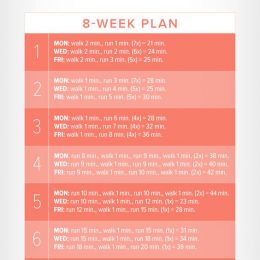Building the kind of body you want is the goal of every ironman. As Socrates said, it is a shame for a man to grow old without seeing the strength and beauty his body is truly capable of.
Seeing your body develop into unadulterated muscle mass capable of lifting insane weights is equal parts strength and beauty. If you’re one of the mass gainers out there, bulking up fast is one of your goals.

Bulking up is one of the most common reasons people hit the gym, behind losing weight, of course. If you hang around hard gainers long enough, you’ll hear about both dirty bulk and clean bulk. They’re the two broad philosophes on adding weight. They’re referred to as philosophies because they’re more about how you think of bulking up than about routines. Dirty bulk is the weight gain method for badasses who don’t give a hoot about the rules. It gets the job done fast and requires no adherence to any diets. All you need to do is ensure you have a significant calorie surplus every day, train as hard as hell, and let your body take care of the rest as it always has.
Clean bulk takes a more measured approach to weight building. It also requires a calorie surplus but in more moderate tranches. You also have to stick to healthy food choices during a clean bulk gain.
So, what are the differences and how which should you go for?
In this article, we will be comparing the two methods across three categories:
- Rate of muscle gain
- Nutrition
- Potential for fat gain
Rate of muscle gain

Muscle gain is at the center of all your bulking up, so it’s appropriate first to consider it. Both systems rely on a simple calorie surplus to bulk you up. If you eat more calories than you burn every day, you are bound to get bulkier. However, how much of this bulk is muscle?
A 2013 study conducted with pro athletes sheds some light on the topic. For the study, a group of athletes was randomly selected into a nutritional group and an ad libitum group. Those in the nutritional group were given meal plans, while the ad libtum group was given the freedom to eat whatever they wanted.
While their food plans differed, both teams were given similar training routines to help them bulk up.
The test lasted for around 8 -12 weeks, and the athletes were measured for their gains before and after. The results showed that the nutritional group with a meal plan added more weight.
This test is usually regarded as conclusive evidence that although dirty bulking can help you add weight, it’s not as effective as when you have a nutritional plan to go with it.
The most important food class when trying to add muscle mass is protein. The amino acids derived from proteinous foods are the building blocks for muscle, and every hard gainer must be conscious of that. Taking food that is high in protein is an important part of bulking up.
Nutrition
It’s almost impossible to take dirty bulking seriously once you consider the nutritional side to it. Because the ultimate goal for dirty bulking is adding weight, people that use it often resort to the foods that contain the most calories and are easy to find – junk food.
Now, we all know what junk food is capable of. Junk food is popular because of its easy accessibility and the ease with which you can consume lots of it. But at the end of the day, junk food is just that – junk. It contains very little helpful material outside of calories and can be unhealthy for you.
Cholesterol added sugar, saturated fat, and sodium are just some of the things you can expect to gain from eating junk food. They’re all things you don’t want to have too much of.
Worse still, when you consume a lot of fattening food, your body’s blood sugar and insulin levels typically shoot up. Continuing to do this over time can lead to a case of insulin resistance and high blood sugar. Once those two set in, you are on the fast track to being diabetic.
Measured weight gain focuses on supplementing the body with vitamins that are deemed vital for muscle growth. It helps avoid being overfed and undernourished.
Potential for fat gain
People who root for dirty bulking are likely to believe all weight is good weight, but this isn’t so. If you’re looking to bulk up, fat gain is something you should be wary of.
As established earlier, most people doing dirty bulking rely on junk food to get their calories. These foods are a huge source of fat which is how calories are stored.
To be clear, both methods will lead to fat gain. Fat typically represents around 70% of any weight gain. However, it can still be problematic.
Most dirty bulkers think they can add weight, even if it’s as fat, and work to convert it to muscle later on. But the science shows that it is tough to achieve that. Gaining a significant amount of fat can have an impact on your fitness, and that in turn makes it even more challenging to lose the fat.
Conclusion
When you look at it critically, the difference between dirty bulking and clean bulking boils down to one thing – what you eat. Working out, in itself, is an act of self-discipline, and that discipline should be carried into other facets of your life, including nutrition.
Sure, with dirty bulking, you can quickly achieve the strength you desire, but your body may lose some of its beauty.
Simply watching the food you eat to make sure that it is healthy can be all you need to go from dirty bulking to clean bulking. If you don’t have any idea where to start, there are many free healthy muscle gain resources online.


